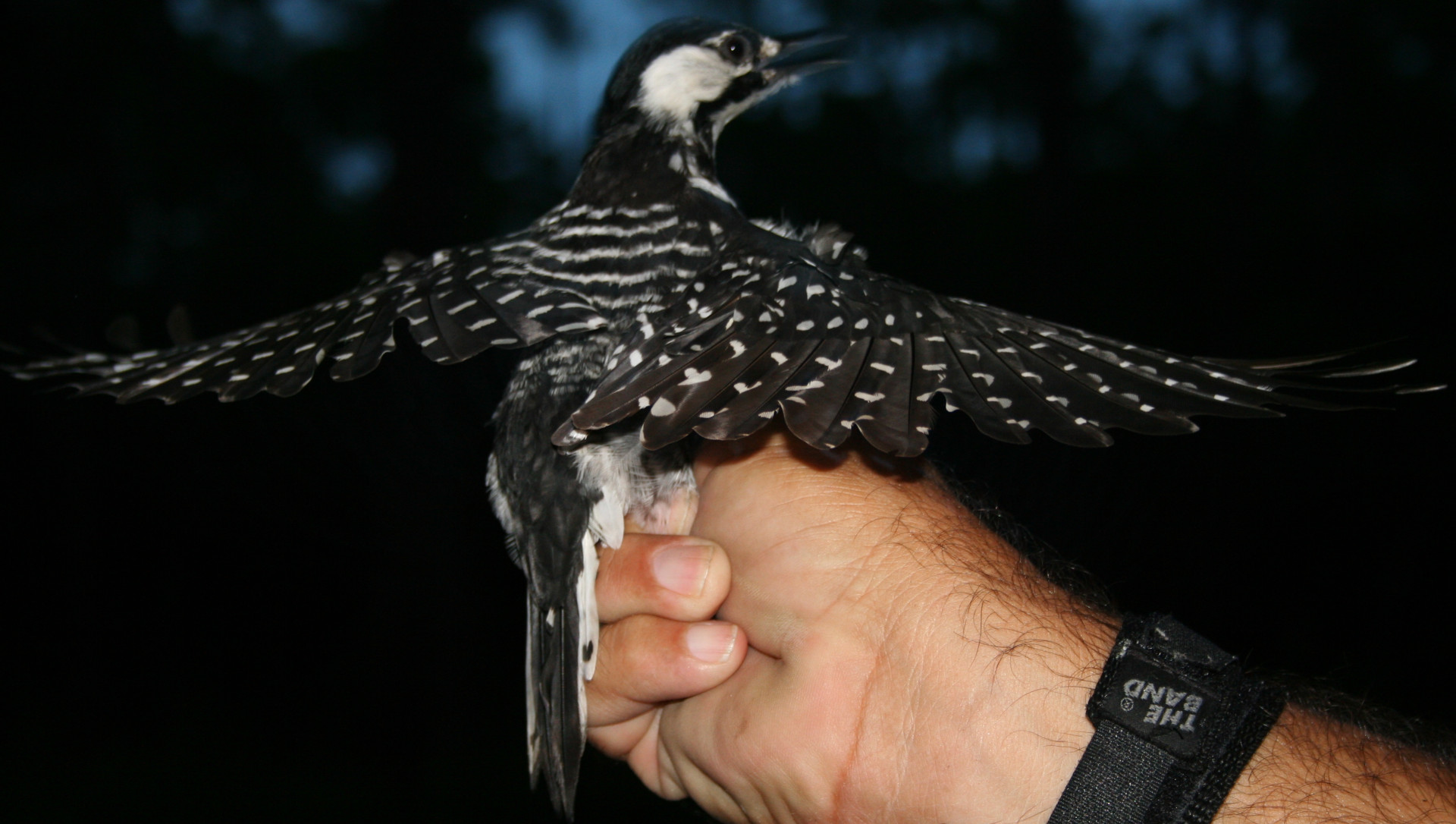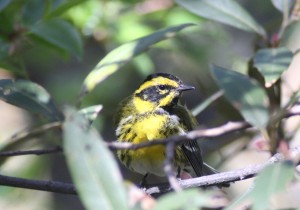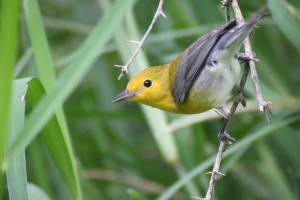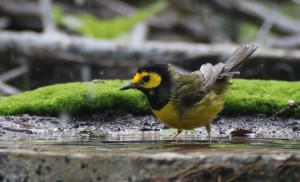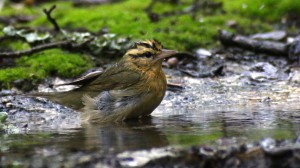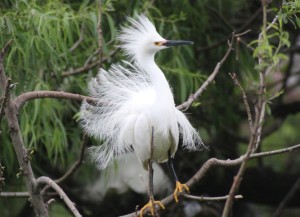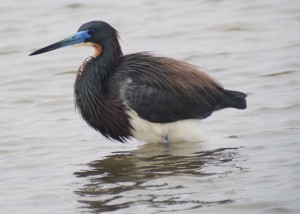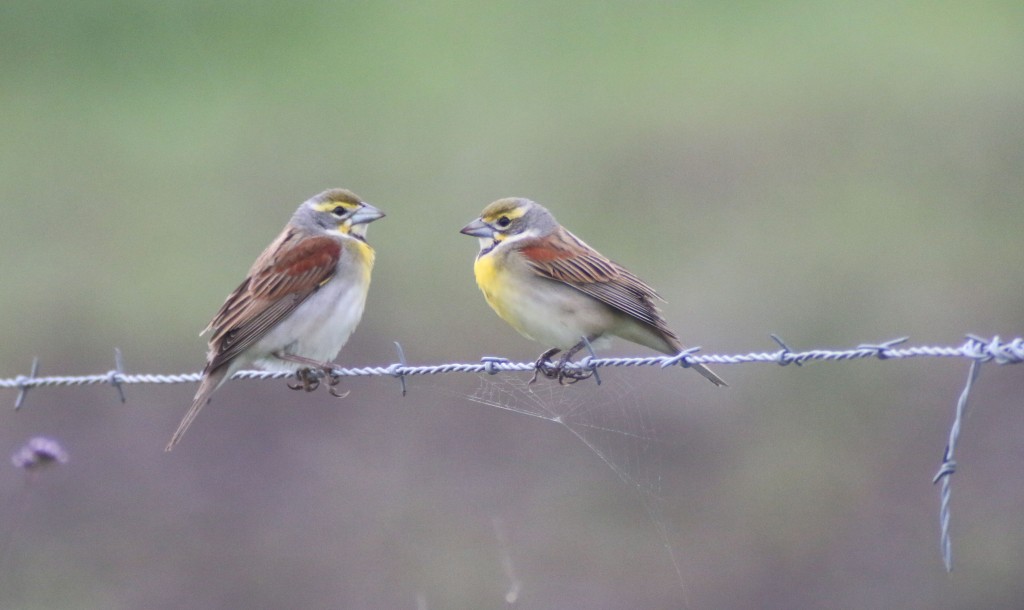To begin our own migration east, just outside the gates of the Texas “World Birding Center” site of Bentsen-Rio Grande State Park, we were able to see and hear both the Lesser and Common Night Hawks in our campground. Inside the park the next morning we identified a Zone-tailed Hawk and saw our first Mississippi Kites of the year, an amazing “kettle” of 30+ of them, circling and riding the thermals. We had been intermittently searching for the Zone-tailed for a while, never sure of seeing one until here. Zone-tailed Hawks summer in the Southwest and are sneaky- they soar high in the air with Turkey Vultures (carrion eaters) holding their wings similarly to fool live prey (small birds and lizards) into thinking that they (like vultures) have no interest in them… oh but they do! We also saw and heard Tropical Kingbirds and Couch’s Kingbirds side by side and considered ourselves fortunate since they are very difficult to differentiate other than by call. Surprised to find few migrants we moved on quickly; so little migration time, so many great places to be.
The South Padre Island World Birding Center site proved a more fortunate choice. We actually planned on birding elsewhere since this area has little to recommend it other than birds (very Panama City Beach-ish…yuk). Utilizing the “I can’t say enough wonderful things about it app”, BirdsEye, we could tell where the birds we needed for our list were being seen, and adjusted our plans accordingly. We were hoping to catch the migrants, and catch them we did; 21 new species including 9 Warblers, a Vireo, a Flycatcher, 2 Grosbeaks, a Tanager, a Redstart, 2 Thrushes, a Sandpiper, a Bunting and 2 Orioles.
Moving to Goose Island State Park, further east along the Texas coast, we camped under their canopy of oaks. Here, most birding is done in the campground, where a horrifying number of caterpillars were falling out of the trees into our hair, down our shirts, and into our laps. Surely this many caterpillars could have supported thousands more migrants. The great views of birds coming in for a sip and taking baths at the well-designed watering station was charming, and helped compensate for the Ick factor of the caterpillars… mostly. The balance of the campground was dense with underbrush, but we did fight through one area while tracking a Yellow-billed Cuckoo. As we were leaving the next morning we discovered that hundreds of caterpillars had climbed to sit up on top of our van tires, triggering me to urge Chuck to consider driving as he would on ice, in case the caterpillar guts were slippery.
We are finding Breeding Plumage is almost unbelievable. I hope that we never become so jaded that we are not overwhelmed by the beauty of even common birds when they are all dressed up in their breeding plumage. The quality of these photographs is pretty overwhelming too- Go Chuck! Chuck has always been able to pace himself well. While birding during migration I felt compelled to run from spot to spot to see a new one. Chuck’s photography requires us to slow down and enjoy the experience and beauty (though it still chafes now and then).
Continuing east we spent time in and around the Anahuac National Wildlife Refuge and High Island, an area well known to serious birders. The weather had been unusually wet making birding muddy, but the Huston Audubon sites (Boy Scout Woods and Smith Oaks) were well maintained with sufficient trails allowing a large number of birders to move around and see the birds. In this area we were able to add 2 Sandpipers, 2 swallows, the Eastern Whip-poor-will, two more Vireos, the Western Tanager, 2 new warblers, Wilson’s Phalarope in a puddle, our first Eastern Kingbird of the year, and the Dickcissel pictured here. Chuck sure slowed down and captured these two- this picture is NOT touched up or an artist rendition!
From here we continued further East to Gulf Islands National Seashore, catching bird #400 which turned out to be a Gull-billed Tern. The Dauphin Island side was disappointing after High Island, but more migrants were to be found across the ferry on the Fort Morgan/ Gulf Shores side. 400 birds within the first 1/3 of the year, and considering our O.J.T. (On the Job Training), this is better than we hoped. The trouble is, we have now ratcheted our hopes higher. 500 now seems easily attainable, do we dare we hope for 600, or even more? In this first 1/3 of our journey, we have learned the importance of birding by ear, and are slowly improving. We learned that we MUST look thoughtfully at each bird without preconceived snap judgments. We learned the benefit of having several field guides available since each has slightly different information, pictures, and keys. We learned to USE BirdsEye to our advantage- other than field guides, we have found this app to be our most helpful tool! We know we need to continue studying shapes, patterns, and sizes while trying not to lose sight of habitat, range, and behavior. We found that being in right place and time is critical; working to see a bird with low probability in one area doesn’t make sense if you will be falling over them soon in another… and we need to learn/plan those places even better. So what can we do with 2/3 of the year left? We shall see.
Near home, at St. George Island, we found 5 more species to add to our list- the Eastern Wood-Pewee, 2 Thrush, 2 more Warblers, and we were happy to see that there were still many species here even though it was getting late in the season. The Youth Camp area makes birding especially enjoyable since the open habitat allows the birds to be seen well. Though the birding was good, we were anxious to be home again and left fairly early in the day. Home to unpack everything for a complete spring “house cleaning” on the van, see our first Swallow-tailed Kite of the year (Chuck gets a Kiss for Every Kite) and then on to Dunnellon Florida for golf and relaxing on the Rainbow River with family… and a cute family of Wood Ducks.
